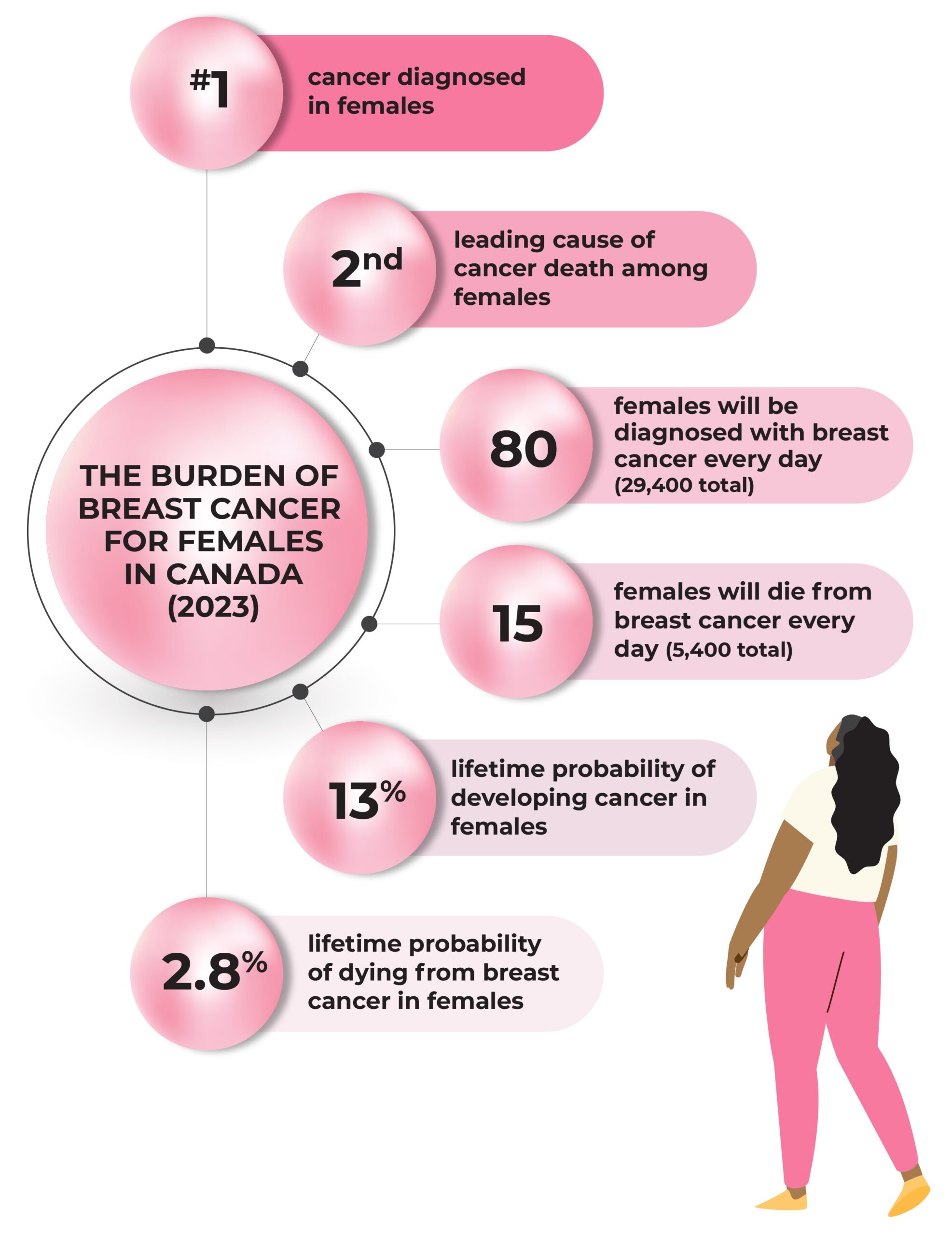Key statistics on breast cancer screening in Canada
The burden of breast cancer for females in Canada (2023)

Text description and footnotes
Several randomized control trials (RCTs) have demonstrated the benefit of regular breast cancer screening with mammography in reducing breast cancer mortality.1 A meta-analysis of these RCTs reported an approximately 20% reduction in breast cancer mortality attributed to regular mammography screening in women who were invited for screening. A pan-Canadian study on organized breast screening programs also reported that breast cancer mortality was 40% lower than expected for women who participated in breast screening programs compared to those who did not.2
Age-standardized rate for incidence and mortality for breast cancer (female), Canada, 1990 to 2022
Data table and footnote
In Canada, age-standardized breast cancer incidence increased slightly between 1980 and the early 1990s. This increase has been partly attributed to the increased uptake in the opportunistic use of screening mammography before the implementation of organized screening programs and the long-term changes in hormonal factors, such as use of oral contraceptives and obesity that have been found to increase breast cancer risk.3 From 1991 onwards, breast cancer incidence rates have remained relatively stable with the highest peaks around 1999 and 2011; 136.5 cases per 100,000 women and 131.5 cases per 100,000 women respectively.
The age-standardized mortality rate for breast cancer has been on a steady decline from 41.6 deaths per 100,000 in 1990 to 22.4 deaths per 100,000 in 2022. This decline has been attributed to factors such as increased mammography screening and improved breast cancer treatment.3
Current state of breast cancer screening in Canada
Organized breast cancer screening has been implemented in all provinces and territories in Canada except Nunavut, which provides screening opportunistically. Most provinces and territories recommend screening asymptomatic individuals at average risk with a mammogram every two years starting at age 50 until age 74 or 75. All jurisdictions in this report used 2D mammography as their primary screening tool, except for Alberta, which used both 2D and 3D mammography. The use of modalities other than mammography may be dependent on a person’s risk.
Additional information about breast cancer screening in Canada and the respective provincial and territorial guidelines can be found in the Breast cancer screening In Canada: 2021-22 environmental scan. As the landscape is rapidly evolving, please check your local breast screening program for the most up-to-date information.
- The benefits and harms of breast cancer screening: An independent review (2012a) The Lancet, 380(9855), pp. 1778–1786. doi:10.1016/s0140-6736(12)61611-0.
- Coldman, A., Phillips, N., Wilson, C., Decker, K., Chiarelli, A. M., Brisson, J., Zhang, B., Payne, J., Doyle, G., & Ahmad, R. (2014). Pan-Canadian study of mammography screening and mortality from breast cancer. JNCI: Journal of the National Cancer Institute, 106(11). https://doi.org/10.1093/jnci/dju261
- https://cdn.cancer.ca/-/media/files/research/cancer-statistics/2021-statistics/2021-pdf-en-final.pdf
